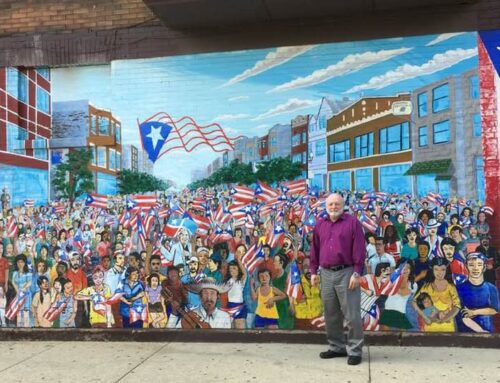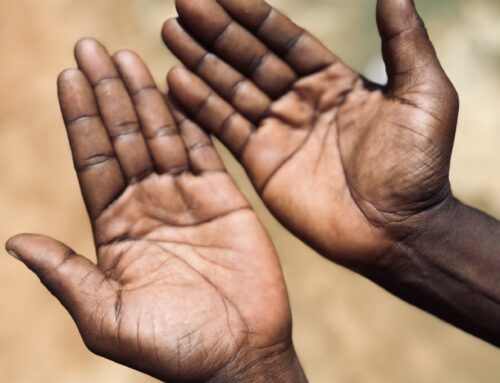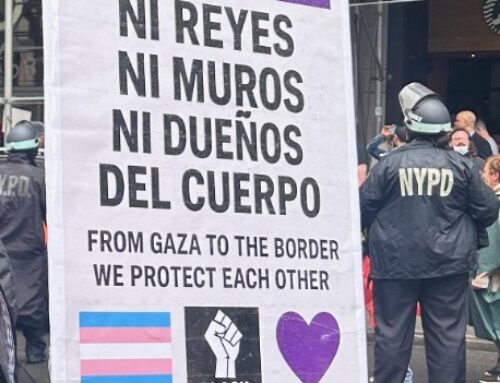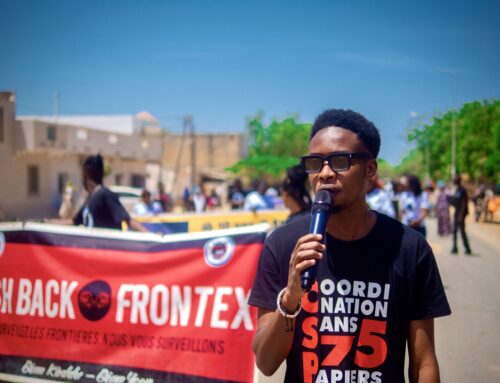“Welcome to Syria,” greeted the robust man as he took our passports. He was seated at a counter, behind security glass. The man, unlike the young men carrying old Kalashnikovs in front of the building’s entrance, was not wearing a uniform. The border crossing had just been re-opened and the hall was still being fixed. Workers were painting the walls and installing a large clock.
A month after the fall of the Assad regime, I was able to enter the country with my husband, Mohammad. Crossing Syria from North to South—from the city of Daraa,[1] where the revolution started in 2011, to the city of Idleb,[2] which led the country’s liberation in December 2024—I met with relatives, friends, comrades, and long-term interlocutors[3] who stayed in Syria throughout the revolution and war, or who had recently returned to their home cities. I witnessed their hope, joy, doubts, and worries. I also observed many differences between my interlocutors’ paths and experiences, as well between the spaces and places in which they were gathering.
Reminiscence of Arrests and Death in Daraa
“Should we call him ‘ibn al kalb’ (son of the dog), or ‘himar’ (donkey)?” asked Abu Ahmad, Mohammad’s uncle. “It doesn’t matter—let’s thank God that he is gone now! I tried his zulm (oppression) and tazib (torture) in my own flesh, and you did too,” said Abu Ahmad, looking over at Mohammad. He was alluding to Mohammad’s multiple detentions by the regime during the revolution. Abu Ahmad continued: “We think a hundred thousand of our youth were martyred. Most of those from our city were killed on the side of the road.”
Mohammad’s mother jumped in to tell her son about the fate of some of their neighbours and childhood friends. Many were disappeared; most were likely killed before being transferred to security branches. Being a young man from Daraa was incriminating enough to be killed on the spot. As we drove through the destroyed city centre that day, she showed us a collapsed building believed to be a mass grave. “We knew they were throwing corpses in this building, and then they bombed it so no one could retrieve them,” she explained.

Sheikh Abazid’s mosque, Daraa. © Charlotte Al-Khalili
After the regime’s prisons were opened, people dared to hope that they would be reunited with their missing loved ones. Many had waited for years (if not decades) to hear from imprisoned relatives, as hundreds of thousands were arrested and forcefully disappeared. Hope grew in people’s hearts as talks of secret underground prisons began to circulate. Unfortunately, many mass graves have been found, but few hidden jails.
Memories of fear on the road
On the road to Damascus, symbols and security infrastructures belonging to the fallen regime were being replaced. Checkpoints were being dismantled, pictures of Bashar and Hafez al-Assad are being thorned or vandalized, and the regime’s flag was being switched out or painted over with the revolutionary flag. For many of the people I spoke with, the most striking difference they were experiencing while moving around Syria was related to the removal of the regime’s checkpoints, which had previously been places of fear, arrest, and death. The checkpoints had made traveling particularly dangerous in liberated areas, where vehicles were regularly be targeted by the army.
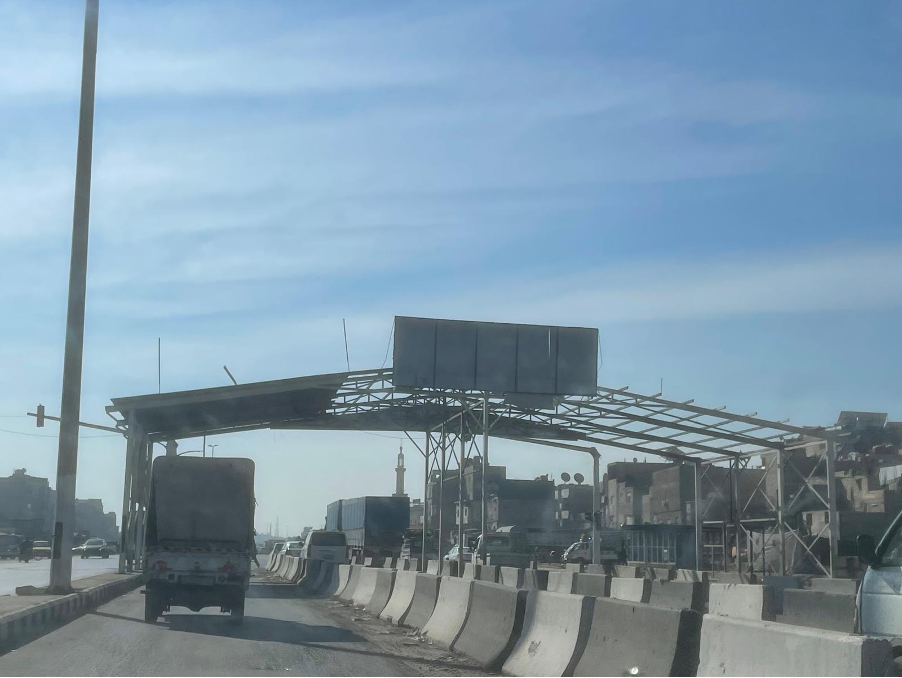
Former regime checkpoint before being dismantled. © Charlotte Al-Khalili
While we drove on the M5, Mohammad’s mother[4] recounted stories of the checkpoints that were still present or had been partly taken down. She recalled the bribes people had to pay and the feelings that were evoked by the checkpoint before the capital, which was locally referred to as “the checkpoint of fear” (hajez al khof). “I used to go to Damascus by bus. On one such journey, the soldiers asked all the shebab (young men) to remain at the checkpoint and ordered the rest of the bus to leave,” she remembered.
Joy and Tension in Old Damascus
In Damascus, I met up with revolutionaries and activists I had known for years—men and women who had come back to Syria after a decade of forced exile. In a café where many former opponents meet over arguileh and hot drinks, the joy of meeting in Damascus after the liberation was palpable as people sang revolutionary songs.
“Charlotte, we are meeting in Damascus! Damascus!”, Bilal exclaimed as we greeted. “Can you believe it?! Who could have thought we would meet here one day!” Like many, he is still in disbelief that he was finally able to return to his city. “Damascus, we are in Damascus!”, he repeated.
Loud music filled the café and musicians greeted a revolutionary figure who had returned after a long exile. In this space, recently returned revolutionaries and activists who had stayed in Damascus were reunited, and tensions were sometimes apparent. Iman, who did not leave Damascus, told me: “We didn’t have the chance to leave; we were here the whole time! Now it’s like we don’t exist!”
Most of my interlocutors who have come back from the “outside”[5] were calling for unity. For those forced to leave their family, life, and homes behind because of their revolutionary activities, accusations like Iman’s fell short of acknowledging the sacrifice and duress of exile. Yet, many revolutionaries nevertheless returned with prestige, aura, money, experience, and diplomas, which contributed to the tensions between the two groups.
Urbicide in Darayya and Maraat al-Numan
Abu Yussef, a man in his mid-fifties, relayed the story to me of his return to Syria from Bekaa (Lebanon) with his wife and four children. “As soon as the regime fell, I told my family to pack their bags. When I saw the small bags they had prepared, I told them: ‘Pack everything you can! We are going back for good!’ After eight years outside the country, I couldn’t wait another second. I wanted to come back and finally live in dignity, in my own home, in my own city!”
We met on a sunny morning in Darayya, a stronghold and symbol of the revolution that was besieged by the regime for four years, and that was largely destroyed before its remaining population was forcefully displaced to Idleb in 2016.[6] Residents who had fled the city before its siege were forbidden to go back until 2019.
Reconstruction was slowly starting by the time of my visit, funded in part by money that had been donated by people from the city who were living abroad. As we walked through the streets, we could see newly arrived residents repairing their homes for their return. A young man was fixing the wall of his apartment, which was located on the third floor of a nearly entirely destroyed building; other flats had newly-posed windows or transparent plastic, or laundry that could be seen hanging from old balconies.
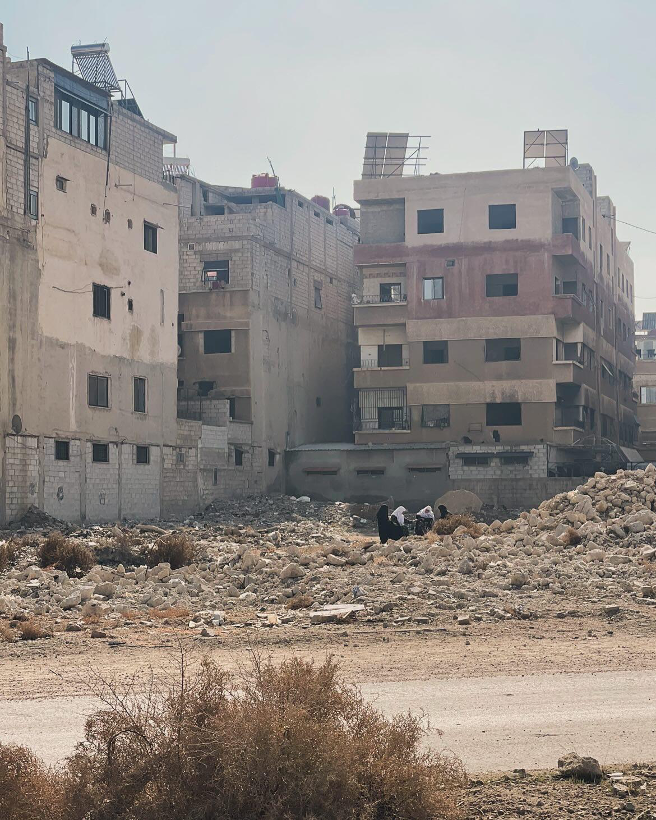
Women drinking coffee on the rubbles of their homes in Darayya, © Charlotte Al-Khalili
Like Abu Yussef, many people were coming back despite the fact that their homes had been destroyed. As we walked through what was left of the city, we noticed several families drinking tea and coffee, seated in circles over the rubble of their houses. Haifa, a teacher in her mid-fifties, told me that in Maraat al-Numan, Idleb, where the destruction had been even more dramatic, people were starting to come back so they could plant their tents on their own land.
Maraat al-Numan used to be home to about 70,000 inhabitants, but no one had been able to return before the fall of the regime. Not even the floors were left in place in Maraat al-Numan—the regime and its allies stole everything, including inhabitants’ belongings and any construction materials that could be re-used or sold. Haifa showed me blocks of concrete from which metal supporting beams had been cut. “They took them all, and they cost a lot of money!”
Haifa relayed to us that she wasn’t able to enter Marat al-Numan at first; it broke her heart to see her city devastated, her home destroyed, and all her childhood memories gone. “There used to be a school here—I went there until sixth grade. And over here, there used to be a park,” she said, pointing to a rubble heap of destroyed buildings.
As we continued on the road towards Idleb, we crossed the village where Haifa had first taken refuge, before it too had been taken over by the regime and she was forced to move to yet another village. Haifa showed us how the land had also been destroyed: olive trees were cut and burned, agricultural fields were mined, and green spaces have disappeared.
Skepticism and Disappointment in Idleb
“We know the Jolani-face; they (the rest of Syria) know the Sharaa-face,” a close friend named Rasha told me, as she greeted me in her city. In Idleb, the atmosphere was different: people I met were more worried and doubtful about Damascus’ new ruler, who had been ruling their city since 2017.
People I spoke with were mainly worried about justice. They have sacrificed a lot and are awaiting justice now. “We don’t want shabiha to come back to our city! We don’t want to live with the people who are responsible for our loved ones’ deaths!” Rasha recounted the story of a man who was a known shabiha and was kicked out of the city by his neighbours. “One of these families has twenty martyrs in Assad jails. How could they live with shabiha as neighbours? No one from Idleb is coming out of the regime’s jails—they’ve all be killed there! We need clear accountability mechanisms now!”
For some, feelings of resentment arose from the fact that after years of isolation, Idleb has become an attractive post-liberation city. It is the only place in Free Syria that has electricity 24/7, and there are more varied and cheaper supplies available to buy. “We are the only ones who have seen prices increased since the liberation; in the rest of the country, prices have decreased. It is hard for people here, but we need to be patient,” Haifa explained. The difference between local supermarkets and those in the South was striking—here a wide range of products and foreign brands were available; one could pay in Turkish liras, US dollars or Syrian liras. People were finding oil and mazut sold in plastic bottles on the side of the road.
The Multiple Faces and Challenges of Post-Assad Syria
“This is still the best possible scenario,” Rasha relayed, describing the fall of the regime through the coming together of different armed factions. This resonated with what so many others had also said: “It can never be worse than the Assad,”
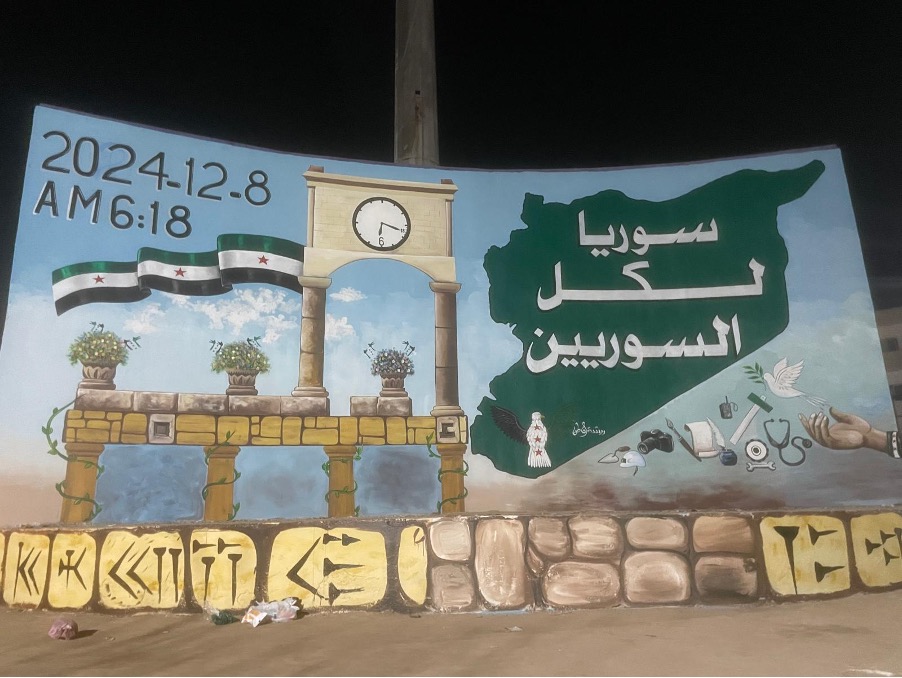
“Syria for all Syrians,” in Idleb. © Charlotte Al-Khalili
Crossing Syria, one notices huge disparities between cities still intact and revolutionary strongholds, which have been totally destroyed. Syrians’ experiences have been multiple: some have become refugees in the global north, others have been displaced in neighbouring countries, while others yet have stayed in regime-controlled or liberated areas. Some went through the horrors of siege and detention, others stayed put in their cities. Many have lost everything.
Syria is thus facing great challenges: reconstruction, the return of the displaced, a growing call for accountability and justice, the creation of a new constitution and political regime. There is still hope that the spirit of the revolution can live on, despite the great challenge of implementing long-term civil peace. There is hope that Syria’s political future will not be hijacked.
Notes
[1] The revolution is either dated to the 15th or 18th of March 2011 (see Al-Khalili 2023).
[2] Idleb was first liberated by the FSA (Free Syrian Army) in 2012 before being taken back by the regime in March 2013. It was later taken from the regime by Jabhat-al Nosra in March 2015 and later became controlled by HTS (2017), whose leader is al-Jolani – alias Ahmad al-Sharaa.
[3] I have been working with Syrian revolutionaries for over a decade, mainly in Turkey where I lived for nearly five years, as well as, in Europe and more recently Lebanon.
[4] See my monograph Waiting for the Revolution to End: Syrian Displacement, Time and Subjectivity (UCL, 2023).
[5] These tensions and divisions between inside and outside are actually reminiscing of previous ones. In my monograph I analyse how revolutionary subjects were built around a different division inside/ outside (2023: chapter 4).
[6] Al-Khalili 2021
References
Al-Khalili, Charlotte. 2021. “Halaqas, relational subjects and revolutionary committees in Syria.” Focaal (91): 50-66.
Al-Khalili, Charlotte. 2023. Waiting for the Revolution to End: Syrian Displacement, Time and Subjectivity. London: UCL Press.
Charlotte Al-Khalili is a Leverhulme early career fellow in anthropology at the University of Sussex. Her work focuses on revolutionary politics and subjectivities, religious temporalities and practices and forced displacement in Syria, Lebanon and Turkey. Her research explores the effects of mass political violence and its aftermaths on displaced communities’ lifeworlds. She is the author of Waiting for the Revolution to End (UCL, 2023) and the co-editor of Revolution Beyond the Event (UCL, 2023).
